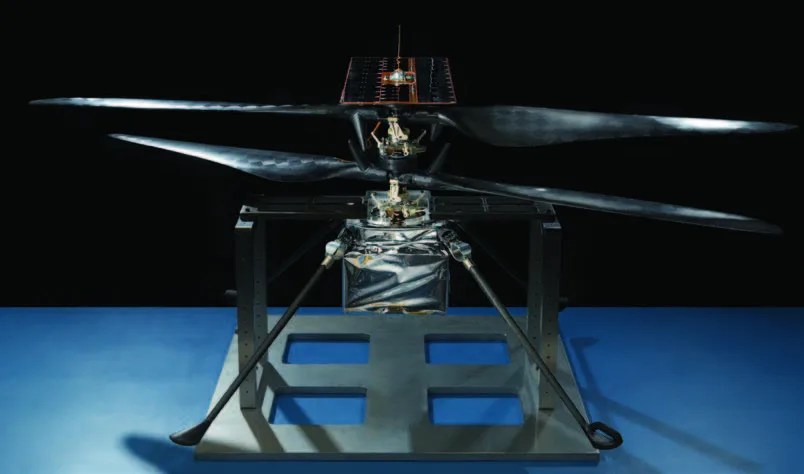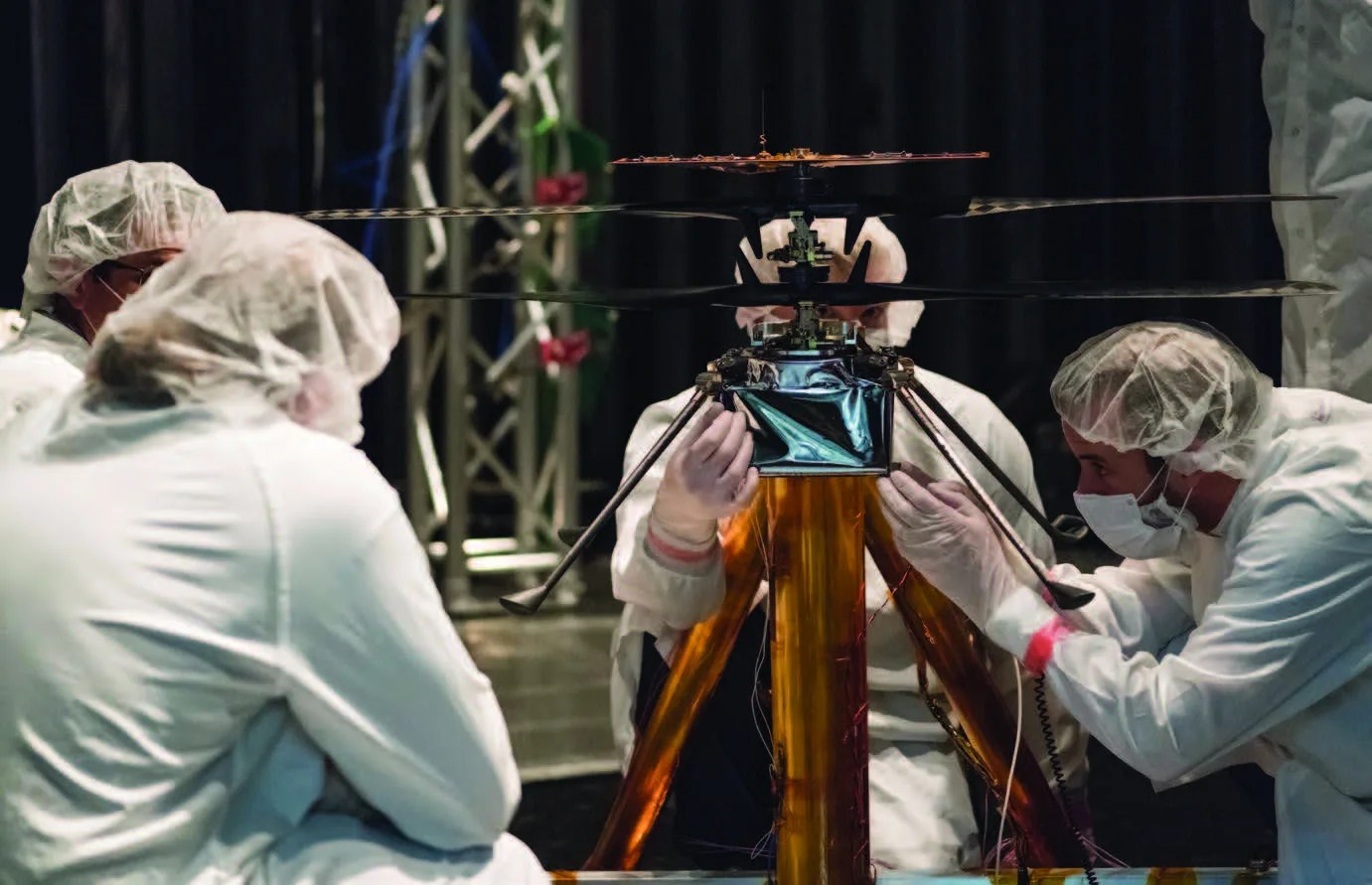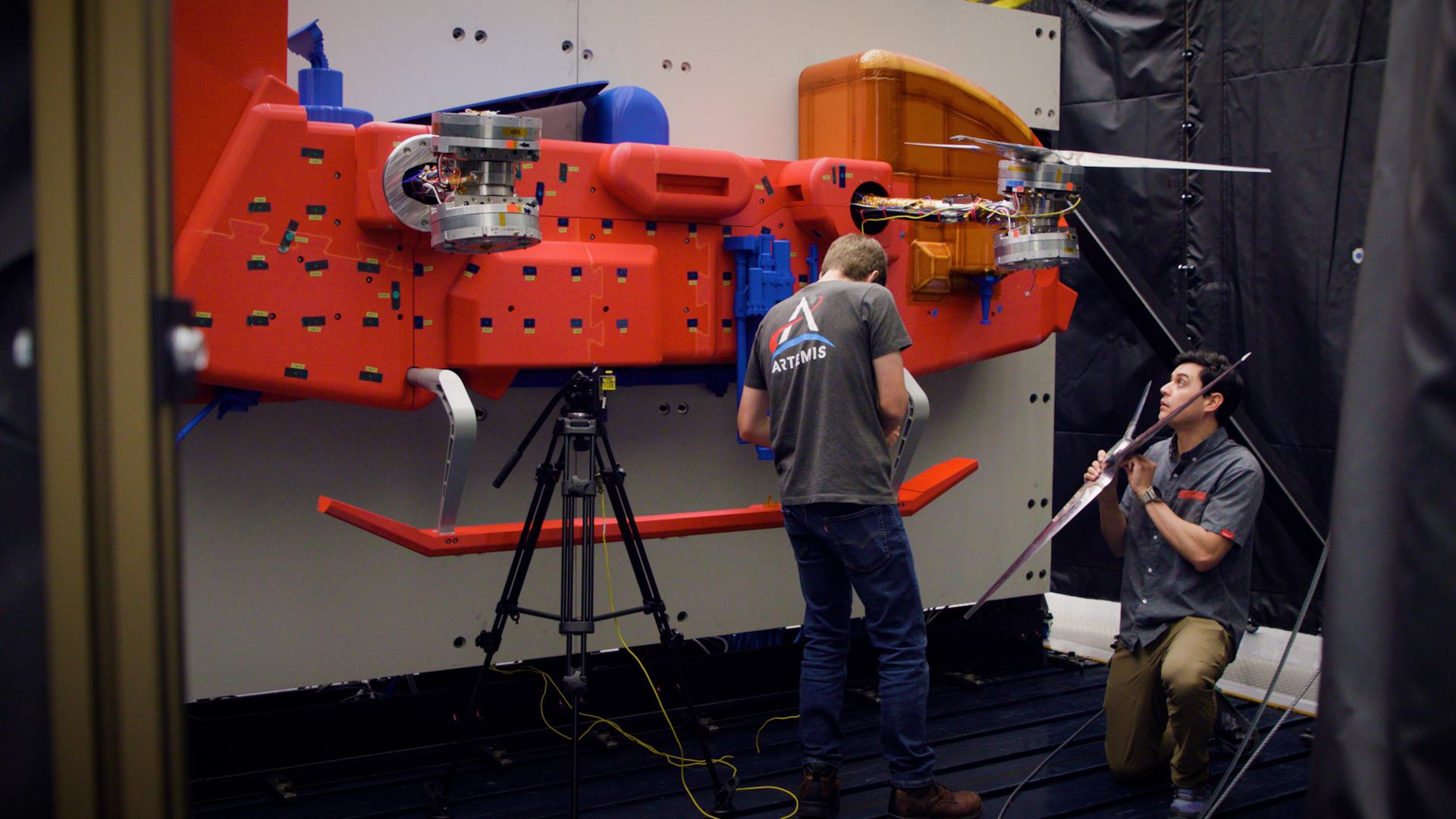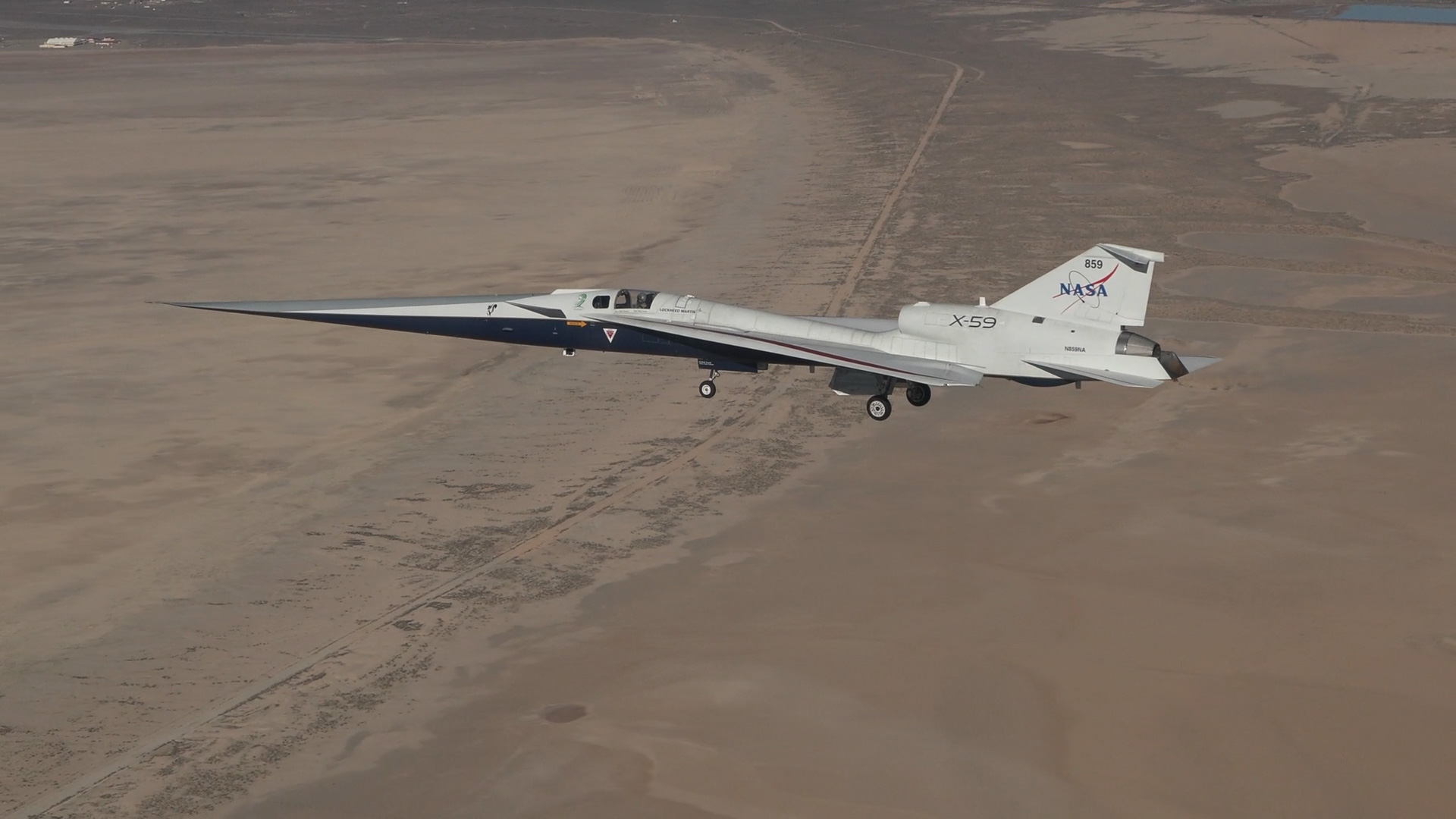PROJECT
Mars Helicopter
KEY POINTS
The Mars Helicopter is a technology demonstration for the Mars 2020 rover mission, intended to show the feasibility and utility of using helicopters for Mars exploration. This technology may enable future missions to perform reconnaissance or independent science, and to access terrain not reachable by rovers and astronauts.
When NASA’s next Mars rover sets out for the Red Planet in 2020, it will bring along a passenger. Nestled under the belly of the rover, the Mars Helicopter will be on a mission to notch a “first” for humankind: flying a helicopter on another planet.
By sending the helicopter to Mars as a technology demonstration, NASA aims to expand its exploration capabilities to include an aerial dimension, potentially opening new areas to exploration, and enabling faster reconnaissance for the benefit of future rovers or astronauts.
With a four-foot rotor and a weight of only four lbs, the Mars Helicopter’s unique design is driven by the harsh realities of the Mars environment. The Martian atmosphere is extremely thin and cold; at only 1–2% the density of sea-level air and with temperatures down to -130˚ F, it resembles Earth’s atmosphere at 100,000 ft—an altitude far beyond the capabilities of regular helicopters.
To make the Mars Helicopter a reality, researchers from NASA’s Jet Propulsion Laboratory (JPL), NASA Ames Research Center, NASA Langley Research Center, and AeroVironment, Inc., worked together over several years to understand the unique challenges of flying on Mars, and to develop a viable vehicle design that is part aircraft and part spacecraft.
A crucial aspect of the design is to keep the mass as low as possible, but to carry enough power and energy to sustain the helicopter during flight. Recent technological advances in areas such as batteries and solar cells, miniaturized sensors and computers, and lightweight materials are key to achieving this goal. Many components of the Mars Helicopter were developed for the commercial cell phone and drone markets. They were qualified for the Mars Helicopter mission through testing in Mars-like temperatures and by subjecting them to radiation levels that would be experienced in space.
The Mars Helicopter is designed to operate independently on Mars, performing flights of about 90 s in duration at a height of 16 ft. The two rotors spin in opposite directions at approximately 2500 revolutions per minute (RPM). Between flights, the helicopter recharges its batteries using an onboard solar panel. A 12-Megapixel camera takes pictures during flight, which are beamed back to the rover for relay to Earth. During the cold Martian nights, the batteries and sensitive electronics are kept warm inside a heated and insulated fuselage.
During flight the helicopter must navigate with full autonomy, unassisted by humans and without GPS or other navigation aids. JPL researchers developed a vision-based navigation system for the helicopter, which analyzes camera images and combines the information with measurements from an inertial measurement unit and an altimeter to keep track of the helicopter’s position, velocity, and attitude. To develop the control system for the helicopter, the team performed extensive modeling and simulation, as well as low-density experiments, to determine how the thin atmosphere would affect the response of the helicopter to control inputs, wind, and gusts.
The team’s “Wright brothers’ moment” came in May 2016, when controlled flight was achieved with a test vehicle inside JPL’s Twenty-Five-Foot Space Simulator, a large vacuum chamber where the conditions of the Martian atmosphere were replicated. In 2018, tests were performed with emulated Martian winds, produced using nearly 900 fans. Furthermore, the Mars Helicopter Flight Model, which will be sent to Mars, was built and tested, before performing its maiden hover flight in early 2019. It will now be integrated with the rover and await the chance to fly again—this time on Mars.
SPONSORING ORGANIZATIONS
SMD Mars Exploration Program, Aeronautics Research Mission Directorate, and Space Technology Mission Directorate





































